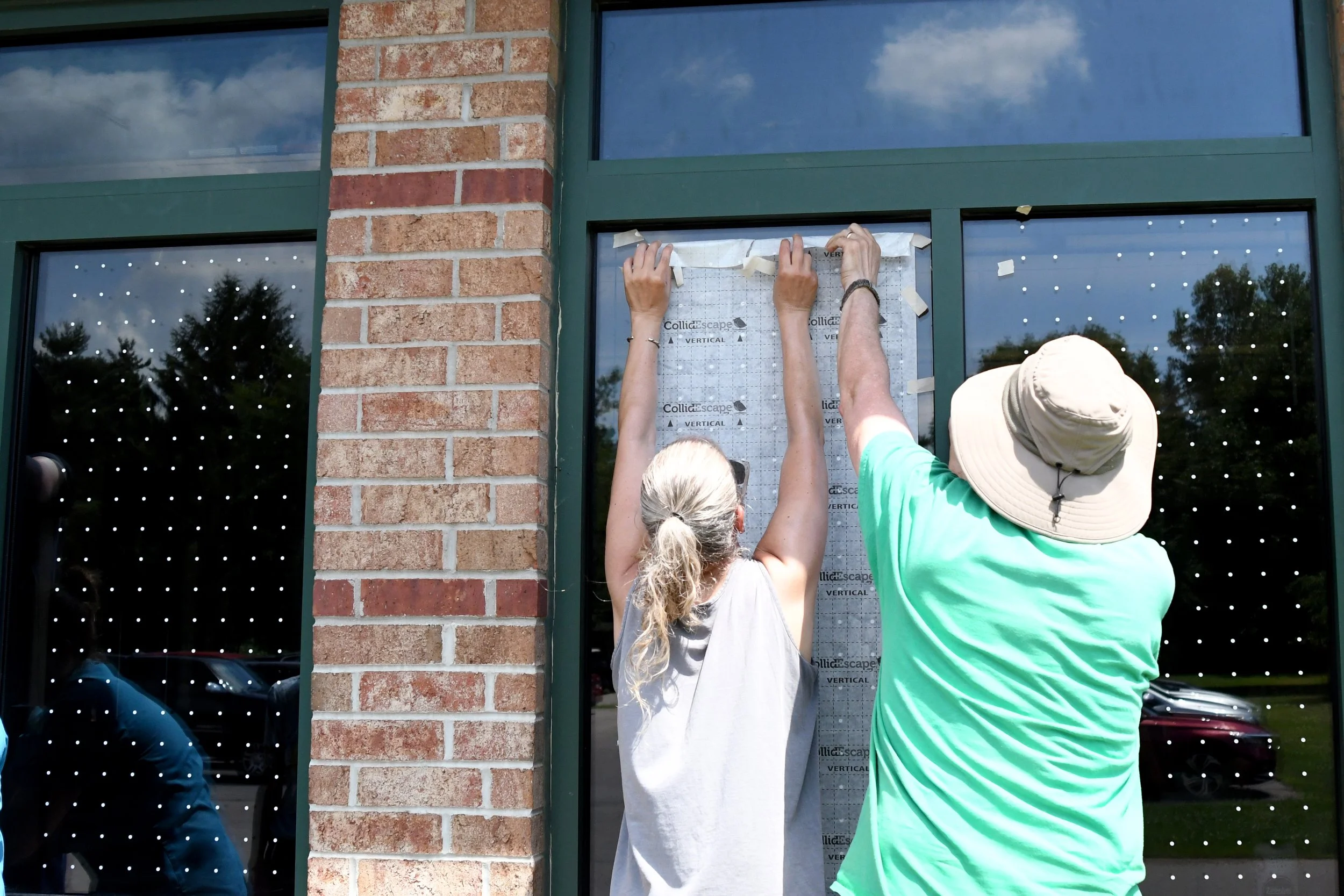Reducing bird-window collisions in southern Wisconsin
In partnership with volunteers and site owners, we study where birds hit windows and find solutions to reduce the problem.
When you look at a tall, glass-fronted building, what do you see? If you put on a "bird-lens", you would quite likely see more open sky to fly through, more habitat to tuck into, or more moonlight to guide you on your journey. The result is over a billion birds birds crashing into windows every single year — the second highest human-caused death of birds after free-ranging cats.
Buildings (homes, low rise buildings, and sky-scrapers) with lots of reflective glass are a big problem. Buildings with lights on during the night attract birds when they are migrating. Birds have hollow bones that make them light enough to fly, but fragile if they hit something solid.
Although we understand the problem, there is a lot to do to create change!
Working toward solutions:
In 2018, the Bird Collision Corps program began conducting surveys of buildings on the University of Wisconsin-Madison campus, and has since expanded the program to include over a dozen other sites in the Madison area. The program continues today, and has grown to include a robust home-owner outreach component and support for other municipalities looking to enact bird-safe glass ordinances.






Results of this work:
Using our Bird Collision Corps data as a foundation, Wisconsin’s first Bird-safe Glass Ordinance passed unanimously in Madison in 2020, and was upheld in court in 2022 and 2023. It requires all new building construction projects in Madison larger than 10,000 square feet, as well as sky bridges and ground-level glass features such as sound walls, glass screens, and bus shelters, use bird-safe design or glass.
Over 5,200 hours of studying bird-window collisions at 75 buildings in the Madison-area by nearly 700 volunteers — and counting!
Large-scale collision prevention strategies put into place and monitored at UW-Madison, American Family Insurance national headquarters, Verona Public Library, Henry Vilas Zoo, Holy Wisdom Monastery, and Dane County Humane Society.
Hundreds of hours of presentations and outreach to homeowners, community groups, and municipality committees about window collision prevention.
Inclusion of Madison, WI in a Yale University bird-friendly building study and report.
Contact
Brenna Marsicek - Southern Wisconsin Bird Alliance director of outreach
Email: bmarsicek@swibirds.org
Phone: 608-255-2473
Banner photo: Madison, Wisconsin skyline across Lake Monona, photo by Richard Hurd FCC




